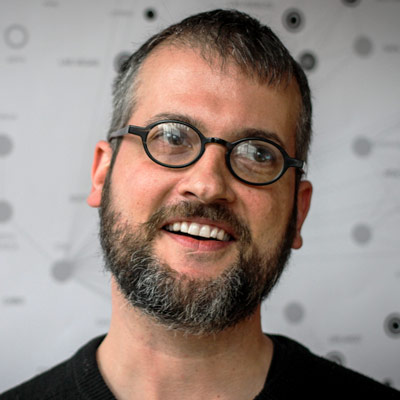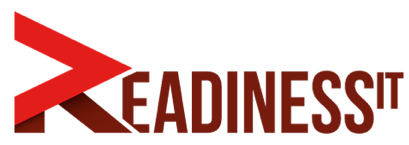-
Dan Klyn is an information architect from Grand Rapids, Michigan and is co-founder of The Understanding Group (TUG). He’s interested in planning, strategy and architecture for places made of information, likes coffee an awful lot, and teaches information architecture at the University of Michigan School of Information. In April 2016, Klyn began serving a 2-year term as President of the IA Institute.
-
Author of:
24
14:00 - 17:30
Meet at Room 5Workshop
Workshop on Wheels
Lace up your trekking shoes, apply sunscreen, charge-up your camera and then gird yourself for a half-day experiential crucible where ancient, modern and post-modern architectonics collide in a human drama at grand scale; where people over millennia have striven to derive meaning in and from the complexities and contradictions of their built environment: the streets of Lisbon, Portugal.
This workshop-on-wheels (and on foot) will be led by Dan Klyn, an information architect whose focus in teaching and in practice has been to apply lessons from close study of architecture in the built environment to the architecture and design of places made of information.
As we wend our way in, around and through the urban fabric of Lisbon, we’ll activate all of our senses and critical faculties in a series of extraordinary places and spaces, selected as contrasting examples of what “good” means (or is supposed to mean) in the built environment around us. At intervals, we’ll be “reading” these structures as texts: reverse-engineering what the builders’ intent may have been from our experiences in the spaces they made.
We’ll also consider architectures of information that are co-present in these architectures of steel and stone and ask: what are the traces of the flow of information through the urban environment? In addition to the devices we carry, how does the physical environment support the storage and delivery of information and meaning?
As part of asking questions such as these, we’ll get hands-on with analytical tools from the work of contemporary architects, and learn together how much or little assistance they provide us toward the answers we seek. In particular, we’ll apply theoretical frameworks from Venturi & Scott Brown, Christopher Alexander and Christian Norberg-Schulz, with the purpose of increasing our understanding of architectures of all kinds, both physical and digital.
Activities
The afternoon and itinerary are structured to balance the opportunities we have to walk in and around buildings, streets and alcoves too narrow for motorized transport with the luxury of being whisked off to points of interest and significant buildings that’re beyond a comfortable walking radius from the conference center.
Activities primarily entail site visits, where Klyn provides historical context and docent-style explanation of noteworthy aspects of architectonic form and function as a springboard for participants’ exploration and analysis of the buildings and spaces in the itinerary. Each stop on the journey is paired with questions to be explored and objections to be raised, with the purpose of activating and amplifying the knowledge and experiences attendees have had in making places made of information through comparison with places made of space, mass and light.
Activity One: Ducks and Decorated Sheds
Meaning in architecture can be located and understood as a duality between surfaces and structures, skins and bones. Participants will take turns seeking, finding and analyzing certain features of certain buildings in terms of ducks and sheds. Based on the work of Venturi & Scott Brown.
Activity Two: Zeitgeist and Genius Loci
A second architectural duality will be manifested variously in the places we’ll visit. The reason places and spaces are made the way they’re made is driven by certain forces and clusters of forces at the time and in the place where building happens. At one pole, the spirit of the age manifests itself in the formal aspects of buildings and spaces that’re meant to be good for people to inhabit. At the other end of this polarity are spaces and structures that arise from the forces of the land, climate, and culture in the given environment. Based on the work of Christian Norbert-Schulz, we’ll run an analysis in both directions.
Activity Three: 15 Properties of Living Structure
Christopher Alexander had to sue the University of California for the right to teach architecture the way he professes it. Alexander’s work has had as strong a magnetic pull for architects of information systems as it’s had a repelling effect on architects in the built environment. However, even while Alexander’s built work speaks clearly and boldly to the goodness of the approaches and cosmologies he professes, examples of successful (or even fruitful) application of Alexander’s ways of seeing and making to contemporary user experience design practice are few. The last third of our day will be focused on identifying and scrutinizing the presence and absence of what Alexander claims are the fifteen properties of living structure. Based on Alexander’s book The Nature of Order.
What You’ll Learn
Participants will learn how to apply three complimentary theoretical frameworks from and to architecture in the built environment as a lens for understanding of the work they do in the making of digital product and service ecosystems.
Who’s It For?
All attendees of UXLX are welcome to sign up for this workshop: it assumes no prior knowledge of architecture or information architecture.
What To Bring
- Mobile Phone
- Camera
- Sunscreen
- Comfortable Shoes
25
09:45 - 10:20
Auditorium ITalk
An Opposite Truth
Among the first principles of UX design, the most sacred tenet can be stated as follows: you are not your user.
User-centricity is a fat thumb on the scale of “doing it right” in our field. To such an extent, that other measures of value and virtue are either subordinated, or precluded from consideration altogether.
The Danish physicist Nils Bohr is reported to have said that while the opposite of a fact is plainly falsehood, the opposite of one profound truth may very well be another profound truth. In this talk, based on research he conducted in Japan, England and the United States, Dan Klyn will make the case – based in the work of Christopher Alexander – for an opposite truth: wherein the human self of the maker provides the primary basis for all deciding in the process of making.


























